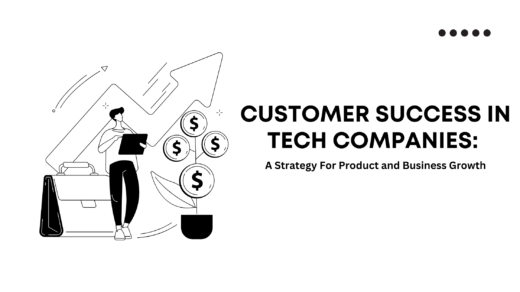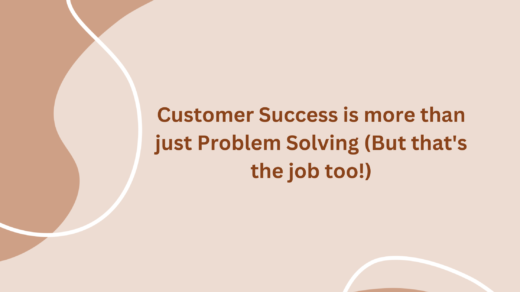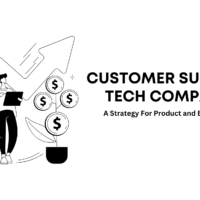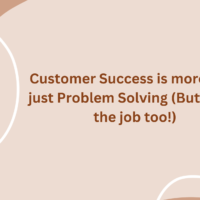“Customer Success is where 90% of the revenue is.” — Jason Lemkin, SaaStr
One thing I’ve learned in my years working in Customer Success, especially in tech, is that great products don’t guarantee great customer experiences. You can have the most innovative software, the most advanced AI, or the sleekest UX, but if your customers struggle to see value, they’ll churn. And fast. This is why Customer Success for SAAS companies isn’t just about problem-solving, it’s about ensuring adoption, anticipating needs, driving value, and building relationships that last. But too many tech companies still treat Customer Success as basic support – only stepping in when something goes wrong.
In my book, Understanding Customer Success: Insights and Strategies, I break down why this mindset is outdated and how businesses can rethink their approach. Today, companies that win at Customer Success aren’t just reacting; they’re proactively designing customer experiences that drive retention, loyalty, and revenue growth.
Why Customer Success Is a Growth Strategy, Not a Support Function
Businesses pour millions into acquiring new customers, and customers on the other hand, have endless options. With your closest competitor just a few clicks away, if your users aren’t seeing value from your product, they’ll quickly move on. If there’s no strategy for keeping those customers engaged after the acquisition stage, they simply leave.
Customer Success is the bridge between acquisition and long-term growth. It’s what turns one-time buyers into lifelong advocates. When you get your CS strategy right, it automatically drives:
- Higher retention rates: A proactive CS strategy keeps customers engaged, reducing churn.
- Stronger revenue expansion: Happy customers buy more and refer others.
- Better product adoption: A well-supported customer uses more features and sees more value.
All of this starts with understanding your customers deeply, their goals, pain points, and the outcomes they want from your product.
The Role of Digital Communication in Customer Success
One of the biggest shifts in Customer Success today is the role of digital communication. Customers expect seamless, personalized interactions – whether it’s through email, in-app messaging, live chat, or even AI-driven automation.
Gone are the days when a generic “Dear Valued Customer” email could cut it. People want to feel heard, and seen. Replacing the “Dear Valued Customer” with “Hello Tony”, could be the difference between Churn and Retention, and the best CS teams are using data-driven personalization to make customers feel like they’re getting a one-on-one experience.
What This Looks Like For Businesses That “Get It”
✅ Automated onboarding flows to help new users navigate the product from Day 1
✅ In-app messaging and Notifications to keep customers up to date on happenings
✅ AI-driven Omnichannel support for real-time, contextual support
✅Automated Surveys for customer feedback loop
✅Customer Segmentations that let’s you understand who your users are
✅Behaviour Dashboards that show how customers are interacting with your product
✅ AI-driven health scores that flag at-risk accounts before they churn
✅ Personalized email sequences that guide users toward deeper product adoption(Lifecycle)
✅Recurring Demo Sessions that show users how to navigate the product
Instead of waiting for customers to reach out with issues, loads of tech companies are now using data-driven insights and automation to engage customers before they even realize they need help.
Customer Success as a Business Imperative
If there’s one takeaway from my book, it’s this: Customer Success isn’t a department. It’s a company-wide strategy. Every touchpoint, from product to marketing to sales, should be designed with the customer’s success in mind.
Think about it this way:
✅ CS and Product & Engineering:
- CS shares real customer feedback to prioritize feature development.
- Flags usability issues and common pain points for UX improvements.
- Helps with beta testing by involving actual customers.
- Provides insights on feature adoption and retention impact.
✅ CS and Marketing/Growth:
- Shares customer testimonials and case studies for content marketing.
- Ensures messaging aligns with real customer needs and pain points.
- Collaborates on onboarding content to improve activation rates.
- Provides insights on customer behaviours to refine acquisition strategies.
✅ CS and Business/Management Team:
- Provide management with valuable customer feedback that informs strategic decisions.
- Track and report on key metrics, including customer retention and satisfaction, to guide business performance.
- Share trends and customer challenges that impact business outcomes and help shape future direction.
- Work with management to allocate resources based on customer needs and business priorities.
✅ CS and Finance:
- Works on strategies and provides data on customer retention and churn to boost revenue.
- Helps assess the financial impact of customer expansion and renewals.
- Assists in optimizing customer payment experiences to reduce involuntary churn.
✅ CS and HR:
- Works with HR to hire and train customer-centric teams across the company.
- Provides insights on employee training needs for better customer interactions.
- Helps shape company culture around customer success and experience.
- Collaborates on internal communication strategies to keep teams aligned on CS goals.
✅ CS and Compliance/Legal:
- Ensures CS processes align with industry regulations and data protection laws.
- Provides insights on customer concerns related to security and privacy.
- Helps streamline compliance-related communication with customers.
- Works with compliance teams on fair usage policies and terms of service updates.
The point here is, that the best companies don’t just “have” a CS team; they embed customer success and a customer-first mindset into their entire business.
Here’s My Final Thoughts
Customer Success is evolving, and businesses that treat it as a growth engine rather than a reactive function will stay ahead. If you’re interested in learning more about how companies can leverage CS for real business impact., check out my book, Understanding Customer Success: Insights and Strategies.




















